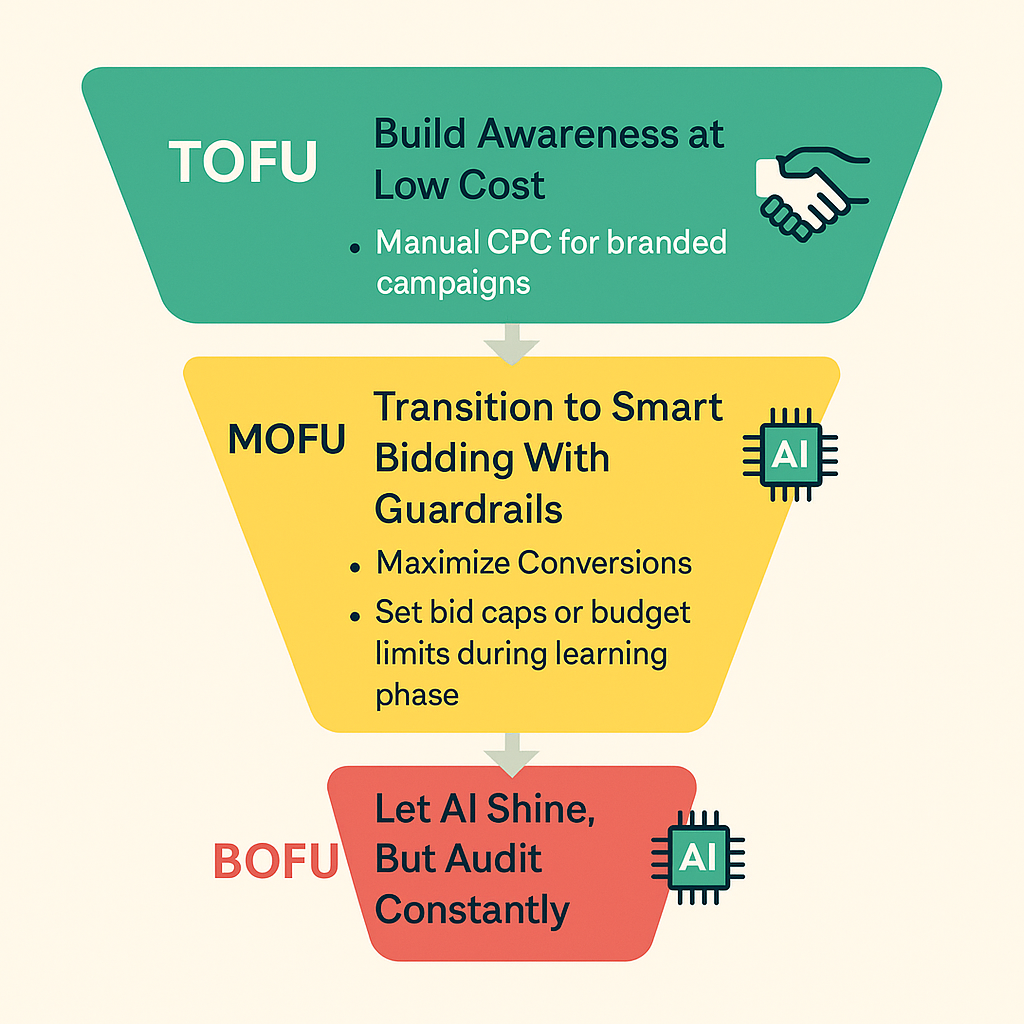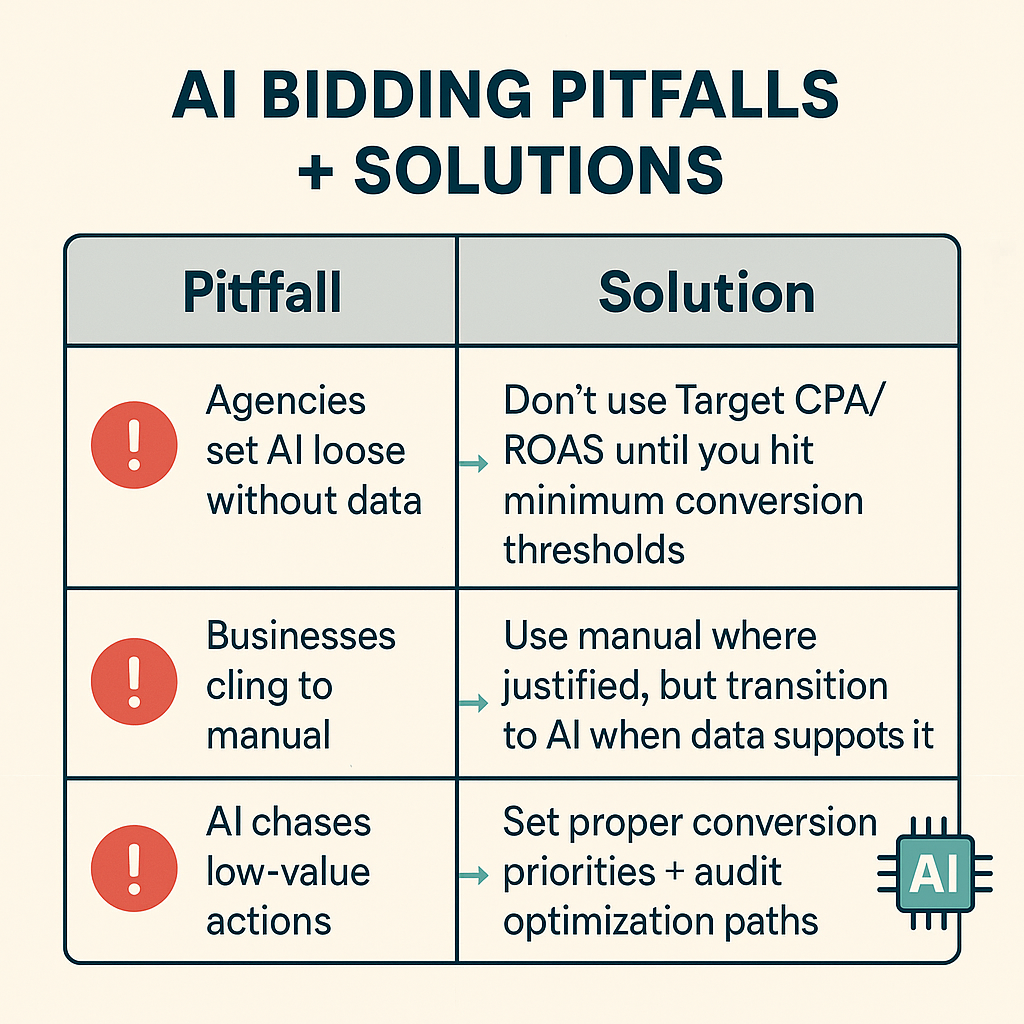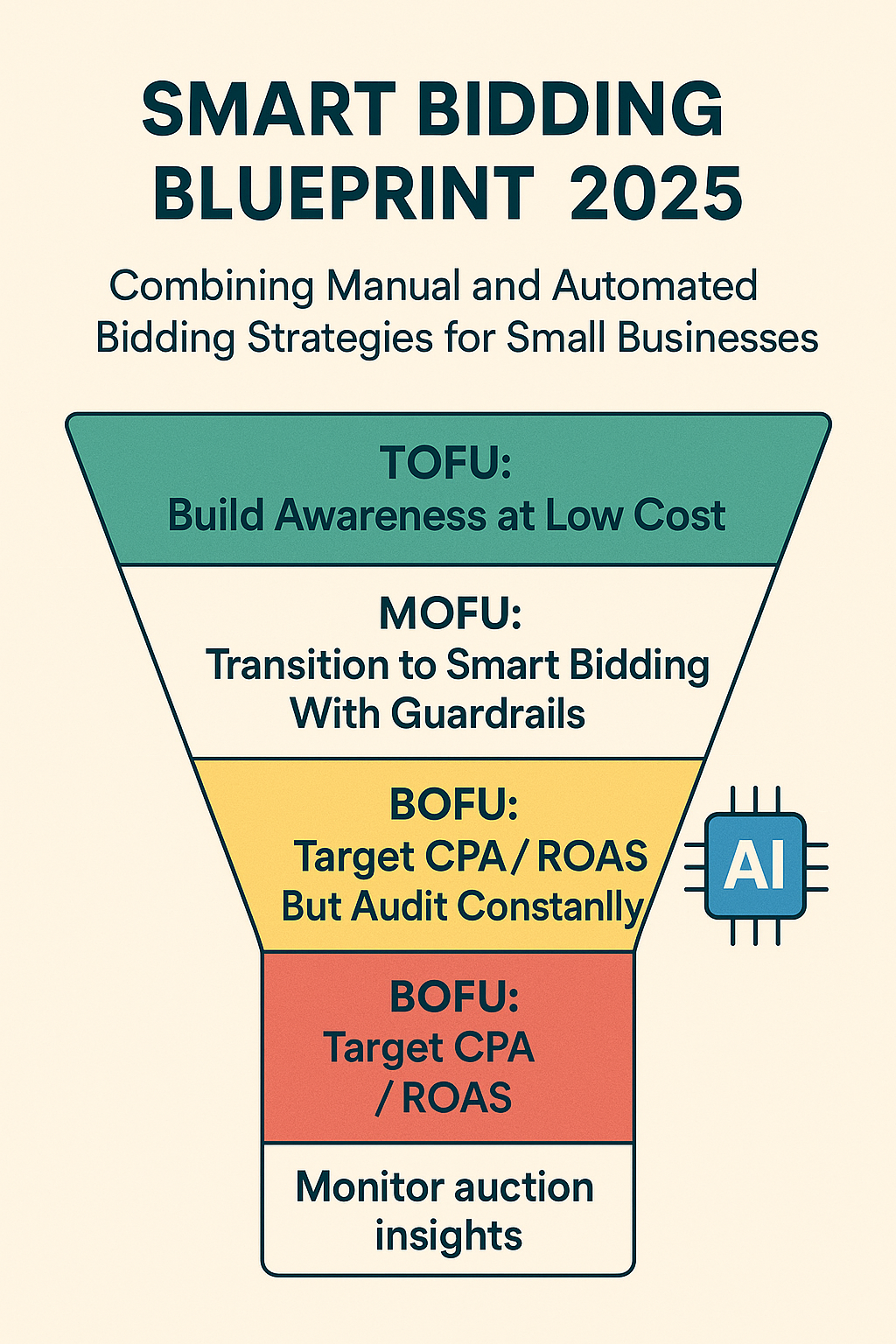Automated vs Manual Bidding in 2025: The Ultimate Guide for Small Businesses
If you're a small business fed up with agencies pushing full automation without a strategy — or clinging to manual bidding out of fear — this guide will help you master the right mix of automated and manual bidding in 2025. With Google's AI more powerful than ever (thanks to Gemini and enhanced Smart Bidding), the question isn't which is better? — it's where and how to use each for maximum ROI.
🎯 Why This Choice Matters More Than Ever
- ✅Google's AI is stronger — but dumber without your guidance.
- ✅Manual bidding still has a place — but not everywhere.
- ✅The wrong approach drains budget, kills ROAS, and stalls growth.
👉 Bidding is no longer about choosing sides — it's about building a smart system that balances machine learning and human expertise.
🚀 The Funnel-Aligned Bidding Blueprint

🟢 TOFU: Build Awareness at Low Cost
- Manual CPC for branded campaigns → protects CPC, prevents AI overbidding on easy traffic.
- Maximize Clicks with bid caps for non-branded TOFU discovery → gives AI room to learn without wasting budget.
🟡 MOFU: Transition to Smart Bidding With Guardrails
- Maximize Conversions after 15-30 conversions → AI starts learning efficiently.
- Set bid caps or budget limits during learning phase → prevent runaway CPC during AI calibration.
🔴 BOFU: Let AI Shine, But Audit Constantly
- Target CPA / ROAS when 30-50+ conversions per 14 days → optimized for efficiency.
- Monitor auction insights + diagnostics every 2 weeks → ensure AI isn't chasing low-value conversions.
✅ When to Use Manual Bidding
- Branded search campaigns → control costs on easy-win traffic.
- Niche/low-volume campaigns → when AI can't get enough data to learn.
- Test campaigns / experimental segments → you want full control during data collection.
✅ When to Use Automated Bidding
- Campaigns with clean, consistent conversion tracking → AI needs good fuel.
- Mid/high-volume campaigns → let AI scale efficiently when data supports it.
- Multi-channel / cross-device scenarios → where AI can leverage signals human bidding would miss.
⚠️ The Pitfalls + Solutions
| Pitfall | Solution |
|---|---|
| Agencies set AI loose without data | Don't use Target CPA/ROAS until you hit minimum conversion thresholds |
| Businesses cling to manual bidding forever | Use manual where justified, but transition to AI when data supports it |
| AI chases low-value actions | Set proper conversion priorities + audit optimization paths |

🔑 Advanced Best Practices
- ✅Use experiments to A/B test manual vs automated on the same campaign type.
- ✅Set up value rules in Smart Bidding → prioritize high-margin conversions.
- ✅Blend tactics within account → don't choose one system globally.
- ✅Audit bidding results bi-weekly → ensure strategy stays on track.
💡 Pro Tip: The 2025 Bidding Hierarchy
Smart businesses follow this progression:
- Week 1-2: Manual CPC to establish baseline performance
- Week 3-6: Maximize Clicks/Conversions with guardrails
- Week 7+: Target CPA/ROAS when conversion volume supports it
- Ongoing: Hybrid approach - manual for control, automated for scale

The 2025 Bidding Decision Framework
Ask Yourself These Questions:
- 📊 Data Volume: Do I have 30+ conversions per 14 days?
- 🎯 Campaign Goal: Am I testing, scaling, or optimizing?
- 💰 Budget Sensitivity: Can I afford AI learning phases?
- ⏱️ Time Investment: Do I have bandwidth for manual management?
- 🔍 Conversion Quality: Are all conversions equally valuable?
🔗 Internal Links
⚡ Final Thoughts
In 2025, winning in Google Ads isn't about manual or automated bidding — it's about knowing how to blend both. At OnlyDeb, we help small businesses build PPC systems where AI works with you, not instead of you. Let's build your custom bidding strategy.
Ready to optimize your bidding strategy?
Get a free bidding audit and custom automation roadmap.